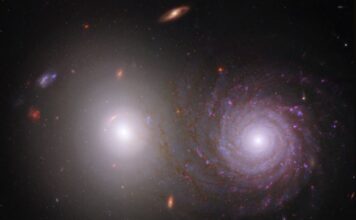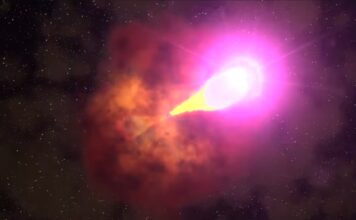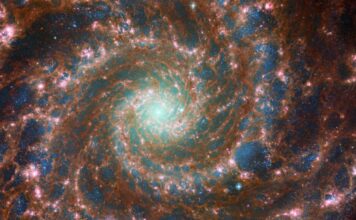The star R136a1 is the most massive star known in the universe. With Gemini South’s help, astronomers have obtained the clearest view of R136a1 yet, helping us understand the most massive stars and discovering that it may not be as massive as we thought.
The star R136a1 belongs to the Wolf-Rayet star (WR star), located in the Tarantula Nebula in the Large Magellanic Cloud. It is the most massive star known, with an estimated mass of 351 solar masses and a luminosity of 8.7 million times that of the sun.
Astronomers don’t yet fully understand how super-massive stars more than 100 times the mass of the sun form. And the difficulty is that these giants are usually at the center of dust-shrouded clusters.
Coupled with the early death of giant stars, the internal fuel will be consumed in only a few million years. In comparison, the sun has nearly 5 billion years to live, so it is difficult to observe.
Scientists have used the Hubble Space Telescope and various ground-based telescopes to observe R136a1, but none of these telescopes have been able to obtain clear enough images to identify other stellar members near the cluster.
Even if it is estimated that R136a1 is about 250 to 320 times the mass of the sun, it may be misled by the brightness and temperature of nearby stars.
The Largest Star R136a1 might be Smaller than we think
Now, using the speckle imaging technology of the Zorro instrument of the Southern Gemini binoculars to overcome the blurring effect caused by the earth’s atmosphere, astronomers have obtained the clearest image of R136a1 so far, distinguishing the position of the giant star and nearby stars, and down-correcting the mass of R136a1 is only the sun 170 ~230 times larger, suggesting that the upper limit of stellar mass may also be smaller than previously thought.
The new results also have implications for the origin of elements in the universe that are heavier than helium, because heavy elements are often produced in unstable supernova events (stars more than 150 times the mass of the sun explode and die),
If R136a1 is less massive than previously thought, and possibly other massive stars as well, there will be fewer unstable supernova events than expected.
The new paper will be published in The Astrophysical Journal.




